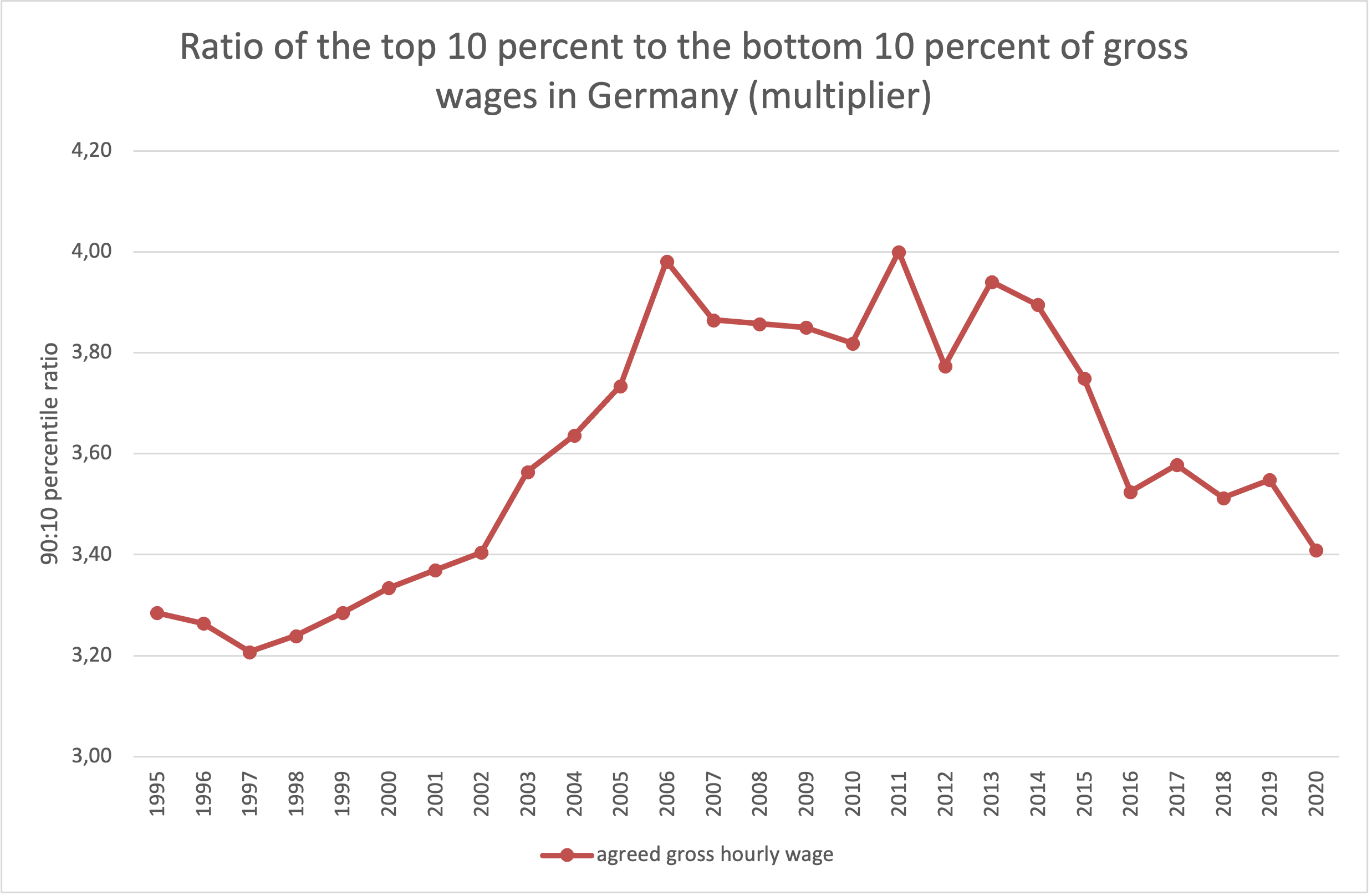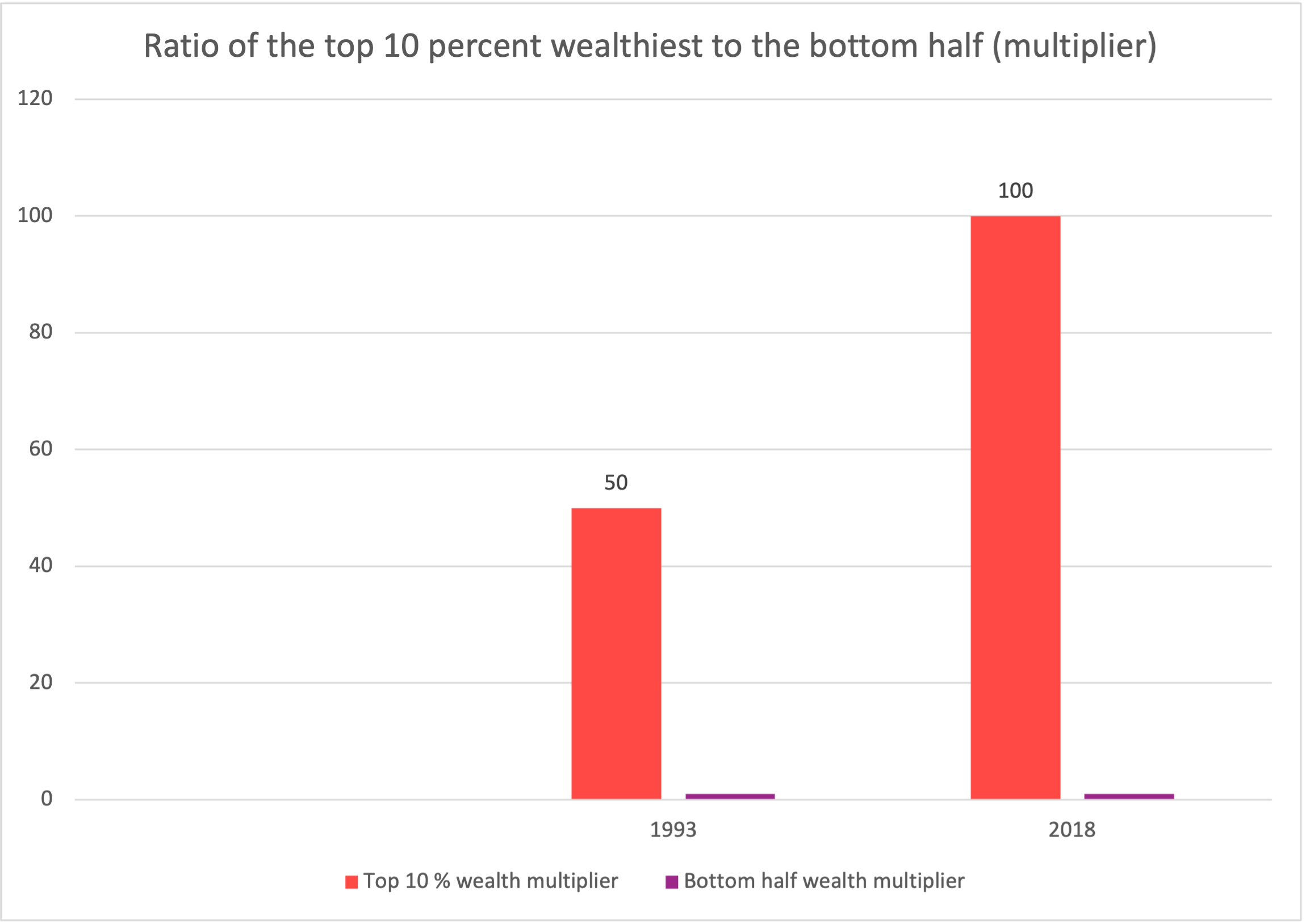Facts
Inequality in Charts
Gap in hourly wages between top and low earners
After the dramatic increase between the mid-1990s and 2005, the gap between the top and bottom has not widened any further. More recently, inequality has even fallen noticeably again, but without returning to the lower levels of the past.

Distribution of annual income in Germany
Income inequality has also not worsened significantly since 2005. However, the previous sharp increase has not been corrected either, despite the significant fall in unemployment during this period. One reason for the divergence between relatively good hourly earnings and poorer annual earnings is the growing number of part-time contracts.

Gini coefficient for the inequality of wealth in Germany
Despite minor discrepancies, the long-term trend of increasing wealth inequality is recognisable in all key survey data.

Drastically increased gap between rich and poor
Comparing the top wealthy with the half of the population with virtually no wealth shows how much the gap has actually widened over the past 30 years.

Richest ten per cent hold two thirds of assets
Since the beginning of the 1990s, the share of the bottom half of the population has again fallen sharply. According to all estimates, the richest ten per cent now hold around 60 per cent of the wealth, although the exact figures (here just under 60 per cent) vary only slightly depending on the source.

Perceived or real - how unequally is wealth distributed in Germany?
Is wealth in Germany drifting apart? And has the disparity reached proportions that are economically and socially problematic? These questions have been triggering emotional arguments in Germany for years. For a long time, there seemed to be no consensus even among scientists and scholars about how unequal the situation is - and whether this should be considered a problem. The fact that the statements were in part strongly contradictory was also due to the fact that in the past there were no detailed and comprehensive official statistics on this.
In recent years, however, the data situation has improved considerably thanks to increasingly reliable estimates, and a consensus has increasingly developed among experts on the development and extent of inequality, as well as on the methods to measure wealth concentration. Measured by today's standard distance index, wealth concentration in Germany has increased sharply since 1990 and is very high by international standards. During this time, the richer half of the population has doubled its wealth, mainly thanks to rising capital gains and asset values. In contrast, the already smaller share of the lower 50 percent in total wealth has almost halved. The fact that wealth in Germany is more unequally distributed than in other countries is true even when taking into account special factors such as the existence of a statutory pension, which for many can be classified as a de facto asset in old age. This paper aims to provide an overview of the current state of research and empirical findings with a focus on the distribution of wealth in Germany.
